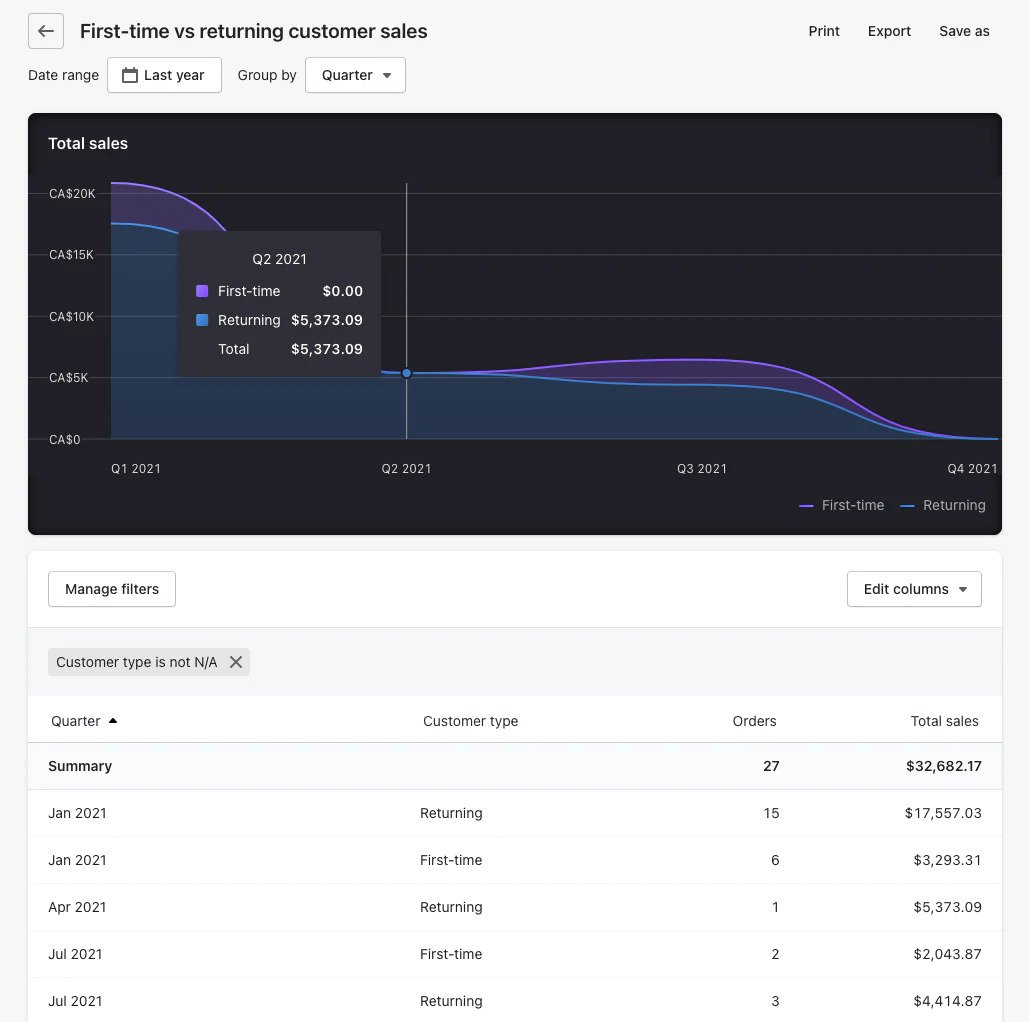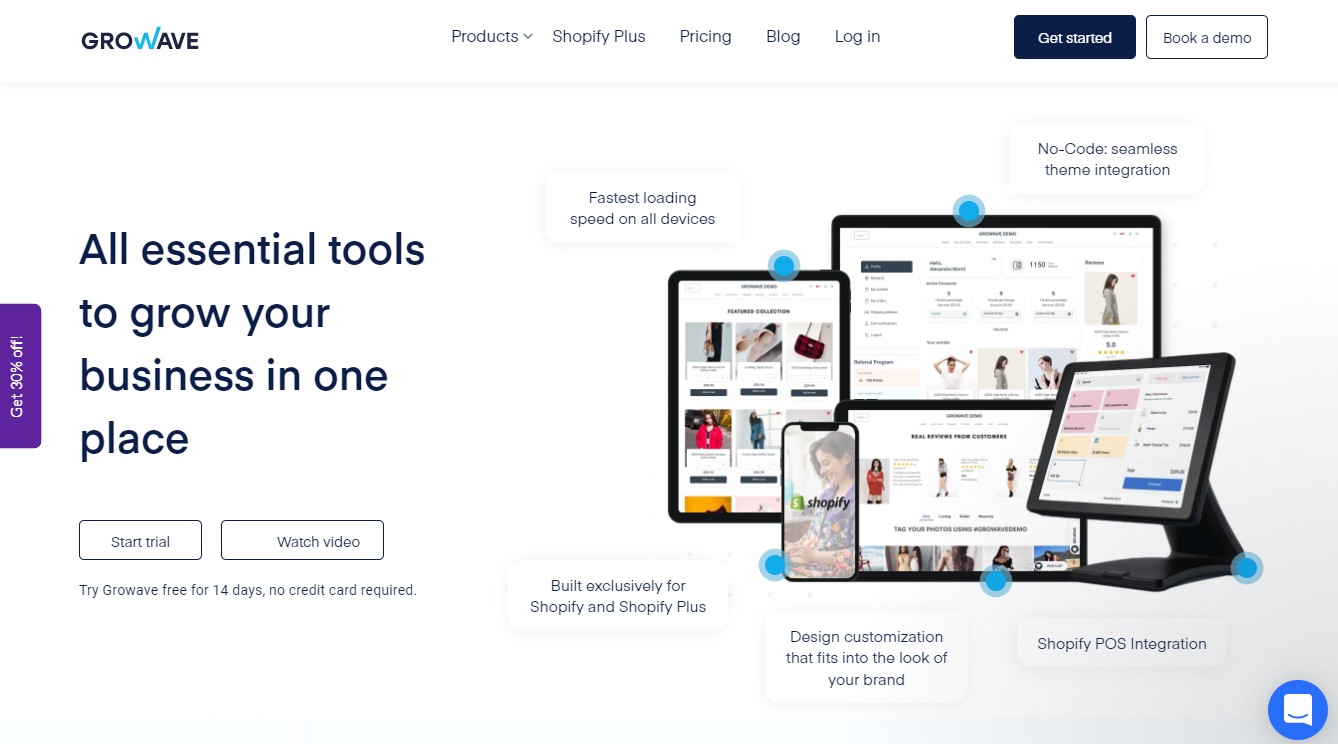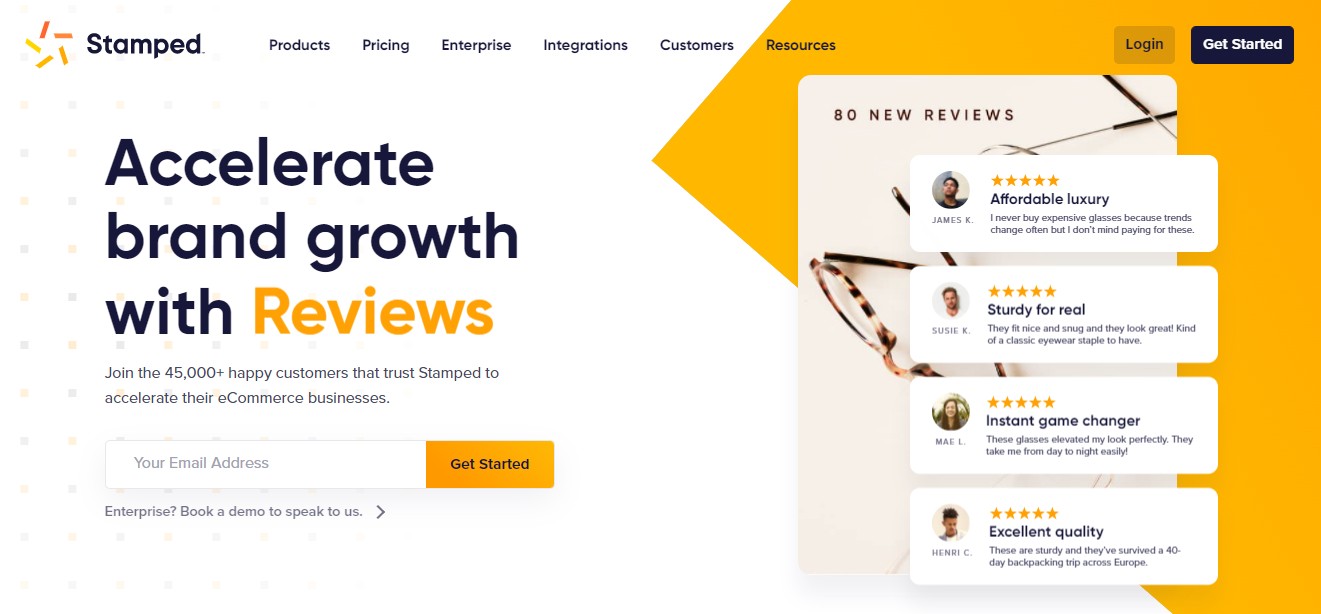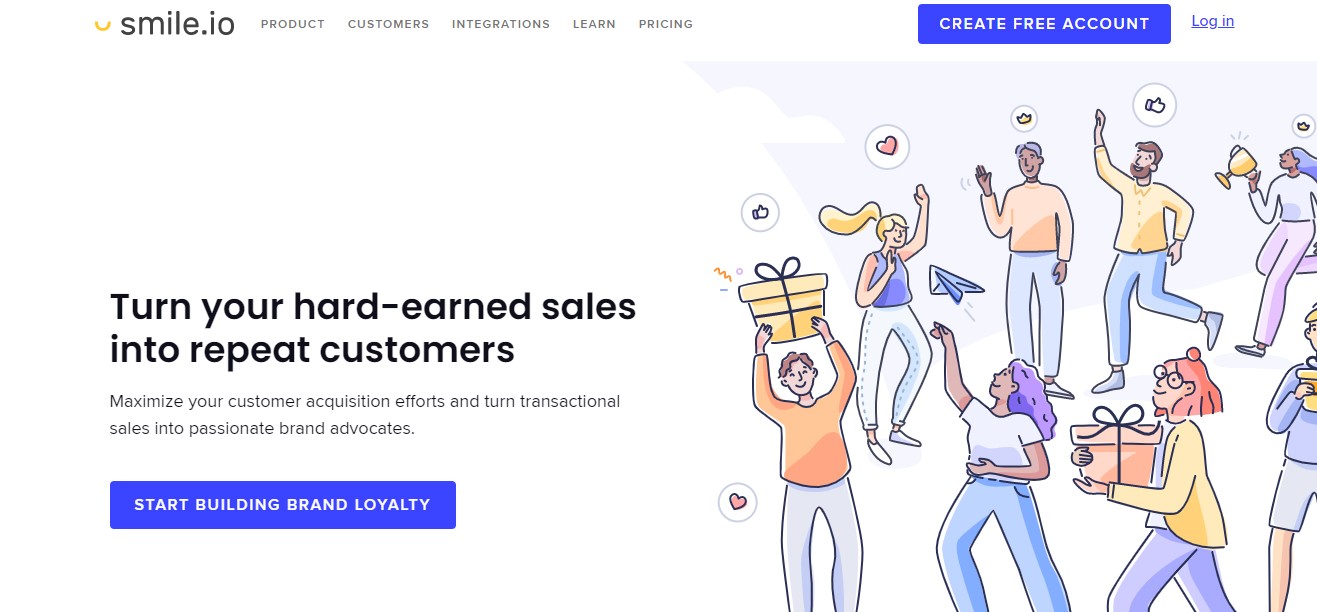Why Boosting Brand Loyalty Is Important
You’re probably getting some traffic on your Shopify store. But how do you keep them coming back? How do you make them so loyal to your brand that they begin to tell their friends and family members about you? This is where boosting brand loyalty for your Shopify store comes in.
Repeat customers spend more on buying your products and cost you less to retain them. This is why it is important to plan ahead of time to retain your customers.
Brand loyalty alone can be what makes the difference between you and the competition. Having loyal customers can help boost your word-of-mouth marketing, increase your user-generated content and customer retention. It even directly raises your bottom line by impacting your store revenue and profits.
This guide will discuss all you need to know about brand loyalty, including the importance, factors that affect brand loyalty, practical strategies to improve customer loyalty, and customer loyalty tools that you can use for your Shopify store.
Let’s jump right in!
What is Brand Loyalty?
Brand loyalty describes a positive relationship with your customers as a brand. It shows the willingness of your customers to choose your brand or your products over the competition consistently.
With the fierce competition that you find in the eCommerce space today, the loyalty of your customers to your brand can set your Shopify business apart. If you have just formed your LLC or commenced an online business, you should consider the strategies you can use to boost your brand loyalty.
Brand loyalty also gives you valuable insight into your customers’ behaviour, which can help you restrategize your business to serve your customers better.
Why is Brand Loyalty Important?
Brand loyalty is an essential aspect of any business, whether small or big. This is because just a fraction of your loyal customers can generate a large percentage of your future revenue. Here are some other reasons building brand loyalty for your Shopify store is important:
1. Reduce Customer Acquisition Costs
Brand loyalty helps to increase your customer retention rate. It has been shown that retaining old customers is cheaper than acquiring new ones simply implies reduced customer acquisition costs. A publication by Emmet Murphy and Mark Murphy indicates that even a slight 2% increase in your customer retention rate can lead to as much as a 10% reduction in your running costs.
2. Increase Revenue and Profits

It costs more to acquire new customers than to retain customers who have shown that they know you and love your brand. Brand loyalty reduces your customer acquisition costs and running costs; hence, it increases your revenue and your profits.
Brand loyalty also increases your average order value (AOV). This is because your loyal customers are more likely to make larger and more frequent purchases as time goes on. This, in turn, boosts your customer lifetime value (CLTV) as your loyal customers are likely to buy other new products you add to your store because they’ve come to trust your brand.
3. Improve Brand Reputation and Advocacy
64% of marketing executives believe that the most effective form of marketing is word-of-mouth marketing. Customers who are loyal to your brand love to buy from you, but beyond that, they are likely to tell their family and friends. By building brand loyalty, you create a larger fan base for your business.
The more loyal customers are to your brand, the more likely they will recommend your business to their friends and families. This will directly drive up sales and improve your brand reputation.
4. Gather Valuable Feedback for Evaluation
Customers who are loyal to your brand are interested in seeing it bloom. With increased brand loyalty, you gain access to valuable feedback and ideas from your customers. You can use this feedback and ideas to evaluate and improve your business strategy.
You can also expand your business based on these ideas as you’ll have the assurance that your loyal customers have shown some level of interest in those new areas.
Factors Affecting Brand Loyalty
Trust is the very basis on which brand loyalty is built. Customers will not become loyal to you if they cannot trust your brand. Certain factors are responsible for this, and by addressing these factors, you make it possible for your customers to become confident and trust your brand.
Some of these factors include:
1. Brand Values
Your brand values are arguably the most important influence on the loyalty of your customers. Customers are interested in the values you stand for as a brand, and they also consider the principles that your brand follows. People are generally drawn to customer-centric brands.
2. Quality
Another popular factor that determines brand loyalty is quality. Nobody likes to buy products of poor quality.
You want to make sure that your products are of high quality and meet your customers’ expectations.
3. Customer Service
Everyone appreciates good customer service, and people are more likely to become return customers when a brand treats them right. Addressing the concerns of customers swiftly is a great place to start. You can proceed from there to improve their navigation experience as they shop on your Shopify store.
4. Shopping Experience
Whether you notice it or not, people are very particular with their shopping experience. They want to enjoy a seamless shopping experience, and they want your checkout and shipping to be hassle-free as well.
So, optimize these touchpoints to earn your customers’ loyalty.
How to Measure Brand Loyalty
Measuring brand loyalty using certain metrics can help you monitor your brand loyalty better. These metrics will give you insights into why and how your customer loyalty increases and how to make it even better.
Some of the metrics to pay attention to include:
1. Net Promoter Score (NPS)
Your net promoter score helps you understand the chances of your customers referring your brand to other people. In other words, it lets you track your loyalty marketing. When measuring brand loyalty with NPS, ask your customers the following:
On a scale of 0-10, how likely are you to recommend us to your friends, family or business associates?
Customers who choose between 0 and 6 are called detractors, those who select 7 or 8 are passives, while those who choose 9 or 10 are your promoters.
To get your NPS, simply subtract the total percentage of detractors from the total percentage of promoters, i.e.,
Total percentage of promoters – Total percentage of detractors = Net promoter score.
2. Customer Loyalty Index (CLI)
The customer loyalty index is regarded as the measure of customer loyalty over a specific period. It factors in other metrics like net promoter score, repeat purchases, and upselling. As opposed to NPS that measures just customer intention, CLI considers customers alongside their actual behaviour.
To measure your CLI, ask your customers these questions:
- How likely are you to purchase a product from us next time?
- How willing are you to try out other products from our brand?
To calculate your CLI, use the formula below:
(Total number or returning customers ÷ Total number of customers) x 100 = Customer loyalty index.
3. Customer Effort Score (CES)
Customer Effort Score measures the effort your customers have to put in to return a product or get any issues they have resolved. People tend to be more loyal to brands that have products that are easier to purchase and/or return if there is a need to.
To track your CES, you want your customers to rate how easy or difficult it was to perform a specific action – making a purchase, lodging a complaint, or returning a product. When you get responses, calculate your CES using the following formula:
Total sum of responses ÷ Total number of survey respondents = Customer effort score
4. Repeat Customer Rate
Your repeat customer rate tracks the number of your customers that are willing to buy from you again. This can help you give a rough projection of how likely they are to make further purchases from you in the future. This should be one of the primary metrics you consider because the health of your Shopify business depends on it.
To track this, check out the first-time vs. returning customer sales report in your Shopify admin.

Your repeat customer rate is the number of customers that made more than one purchase divided by the number of unique customers, i.e.,
(Number of customers who’ve purchased before ÷ Total no. customers) x 100 = Repeat customer rate
5. Purchase Frequency
This metric tracks how frequently your customers make repeat purchases. It is important to keep an eye on this metric because repeat purchases are usually one of the most significant contributors to your annual revenue.
Within the same timeframe of your repeat customer rate, your purchase frequency is the number of orders placed divided by the number of unique customers.
6. Average Order Value (AOV)
Your AOV measures the average value of each order of your customers, making it easier to identify customers with the highest value. To track this, you can check out the Sales by customer name report in your Shopify admin, then divide the total sales by the order count to get your average order value.

10 Tips for Boosting Brand Loyalty for Shopify Business
Your customers won’t become loyal to your brand magically overnight – you need to work hard to earn it.
That said, here are 10 tips and strategies to improve your brand loyalty:
1. Prioritize Excellent Engagement and Customer Service
Excellent customer service is one of the most important things when it comes to running a Shopify store. All things being equal, exceptional customer service can keep your customers coming back time and time again.
Your customer service should cover all areas of engagement. This includes their first interaction with your brand, their experience with your product, and even your team. Being friendly, open to your customers in addressing their questions and complaints, and genuinely caring about them can delight them and make them loyal customers to your brand.
More than half of eCommerce customers will stay with a brand as loyal customers because of the stellar customer service they enjoy. Hence, invest in excellent customer service.
2. Know Your Customers and Exceed Their Expectations
Another strategy you can implement to convert your customers into return customers and even loyal customers is to exceed their expectations. Everyone appreciates when their expectations are met, but nothing beats exceeding expectations.
You can start this by researching what the basic needs of your customers are. You also want to know what catches their attention. Keep in mind that trends change, so you should not be static. By knowing what their basic needs are, you can understand what their expectations are.
By delivering on your promise to meet their basic needs with your product and going above their expectations, you can guarantee that they will prefer your brand to the competition.
3. Create Customer Feedback Loops
While customer feedback is a benefit of brand loyalty, it is more than just that. It’s also a method of building and improving brand loyalty, and that is where the ‘loop’ comes from.
Your customers feel heard when you encourage them to provide feedback. When you implement their recommendations or attend to their complaints, they feel valued and even respected. This increases their loyalty.
4. Optimize Your Shopify Store’s Appearance and Make It Mobile-friendly
As a Shopify merchant looking to increase your base of loyal customers and increase your bottom line, you must make your Shopify website mobile-friendly and attractive. A mobile-friendly website is very important because most people coming to your website will be mobile users.
Many customers are unlikely to return to make a second purchase if they don’t find your website easy to navigate.
5. Personalize Customer Experience
Every customer wants to feel seen and acknowledged, and you can achieve this by personalizing their shopping experience. This helps build a stronger bond and connection between your customers and your brand.
You can personalize your customer’s experience through your various marketing strategies. This includes tailored email and SMS marketing, adding handwritten notes to product packages to be delivered, postcards around the holidays, and customized messages. You can use insights about their preferences and tastes to recommend other products that may be relevant to them.
By personalizing your customer’s experience, you tell them that they are important to your brand and that you value and care about them. This will make them trust your brand more and make them loyal customers.
6. Add More Payment Options
An excellent way to improve your customer experience and drive brand loyalty is by providing different quick payment options at the checkout page. Most customers may not return to your store if they don’t get the payment options they are used to, or if the available options are too complex or time-wasting.
Signing up for a new payment platform can be annoying, time-wasting, and tiring for your customers. It also makes them more likely to abandon their cart and your store for some other store. To avoid this, add multiple payment options to your Shopify store.
7. Be Consistent
One of the ways to successfully build brand loyalty is consistency. Customers expect a consistent experience every time they shop from your store or interact with your brand. If you provide an inconsistent experience, it will become increasingly difficult for your customers to build a relationship with your brand.
When you provide a consistent experience for your customers, they can be sure you’ll meet their expectations every time. This increases their loyalty to your brand, and your overall customer retention rates improve. It makes them confident to refer your brand to their friends and family.
8. Build a Community
There is more to your brand than just a creative business logo design, colours, and other things that differentiate you from the competition. Customers build a relationship of trust with businesses they can connect with emotionally.
The best way to achieve this is by building a community that embodies your brand values and making your customers part of it.
9. Connect with Your Customers on Social Media
An excellent way to build brand loyalty is by connecting with your customers on Facebook, Instagram, and any other social media platform they socialize on.
Shopify has made this easier with the opportunity for merchants to integrate social media platforms, like Facebook, Instagram, and Tiktok, into their stores. You can also share user-generated content on these platforms.
User-generated content is the type of content a customer creates to express that they are impressed by a brand. It could be a testimonial, review, social media post, podcast, etc.
By sharing user-generated content on social media, you provide potential customers with the social proof they need to convince them to make a purchase. It also makes the customers who provided the content feel special and appreciated, which will drive up their loyalty to your brand.
10. Build a Customer Loyalty Program
Implementing a successful customer loyalty program can significantly influence your customer’s shopping patterns. Not only will it help to boost customer engagement, but it can also help to increase your sales.
Customer loyalty programs are easily one of the best and cheapest ways to reward your customers for being loyal. Remember that even the best customer loyalty program is not enough to make up for poor customer service or experience.
Customer Loyalty Apps for Shopify
The following are some of the best customer loyalty apps for Shopify that you can use to implement loyalty marketing in your store.
1. Growave

Growave is a point-based and tier-based customer loyalty program that rewards your customers for any action they take that leads to a conversion. They get more points for making a purchase and referring your Shopify store to their family and friends.
You get to choose the number of points to reward your customers with. With Growave, you can also improve your store’s conversion rates with social proof and photo reviews.
2. Stamped.io

Stamped.io is another excellent customer loyalty app that lets you create loyalty reward programs. Ith this tool, you can offer your customers different rewards options, including discounts, free shipping, gift cards, and more. This app allows you to choose the reward options you want and the specific actions you want to reward.
3. Referral Candy

Referral Candy is a referral-based Shopify customer loyalty app that allows you to set up a referral program to get more customers. It allows you to reward your customers with gifts, cash incentives, or even discounts each time they refer a customer to your store.
4. Smile.io

Smile.io rewards your customers with points when they make purchases from your store. They can choose to spend these points on their next purchase from your store. You can also reward customers with points for activities like registration or social shares. If you want, you can also use this app to create a referral program to boost brand loyalty.
5. Rise.ai

Rise.ai is a Shopify customer loyalty app that allows you to reward your customers with gift cards each time they refer another customer to you. It gives you the option of sending these rewards via email.
The app also allows you to set the rules for your loyalty program and even offer customers gift cards instead of refunds for returned products.
Conclusion
You need your customers’ loyalty for your Shopify store to flourish. It goes a long way to improve your customer retention rate, boost customer lifetime value, and help provide stellar customer service.
If you are having a hard time converting your website visitors into customers, the Adoric Shopify app can help.
With our app, you can capture your visitors’ email addresses and convert them into customers, create marketing campaigns to promote your sales offers and promos, and lots more.
Ready to test-drive Adoric and see how it will help improve your customer loyalty? Install it right away on your Shopify store.




